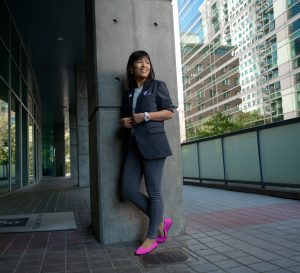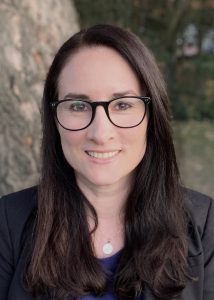Harnessing the Power of Collaboration: A Q&A with Andrea Fernández and Debra Lam
By Eve Tolpa
Empowering Smart Cities through Community-Centered Public Private Partnerships and Innovations was released in Spring 2024 by the Institution of Engineering and Technology. Co-edited by longtime colleagues Debra Lam, the founding executive director of the Partnership for Inclusive Innovation (PIN), and Andrea Fernández, managing director at C40 Cities Climate Leadership Group, the book presents eight case studies from around the world that showcase ways in which cities can harness the power of cooperation to address some of the 21st century’s biggest issues: climate change, digitalization and innovation, economic revitalization, and social inclusion. Here, Lam and Fernández discuss the book in advance of a webinar that shares its name on June 5, 2024.
What is the difference between a traditional public private partnership and a community-centered public private partnership?
Debra Lam: Community-centered public private partnerships (P3s) are not just based on the funding, financing, and operating big public, physical infrastructure pieces, like bridges and dams. Traditional P3s are ineffective against the backdrop of the rise of Artificial Intelligence, data, and virtual infrastructure, including how people interact between physical and virtual infrastructures. We mapped out different types of currencies that are needed for this new type of partnership. First, it’s not confined to a fixed, limited period of time. You have to go through a much longer period to really address these complex problems, like climate change. Second, it’s based on relationships. You need a lot more actors, not just public sector and private sector, but also civic society and universities. The biggest currency is relationships and building a coalition of sectors that all contribute.
Andrea Fernández: One of the things that separates these types of partnerships from the more traditional public private partnerships we’ve seen in the past for infrastructures is its stakeholders coming together, leveraging their resources and experience toward the common good. There’s a shared vision for common good, all around creating stronger, more resilient, greener, healthier cities or places or community. It’s a shared vision, which I think is really key, because these other types of partnerships are dictated by commercial terms, by transactions.
Why is now the right time to introduce readers to this concept?
Lam: There’s a virtual infrastructure that has come about, a technological revolution, so we’re not just living in the physical built environment anymore. There is a whole virtual infrastructure with data and innovations and technologies that we need to account for. The other big driver that sparked the shift is climate change. Within the confines of any one city or community, there have been a lot of shifts regarding the impact of these two factors and what must be done. Andrea and I thought there was a need for a new kind of public private partnership to address the interplay between the physical and the virtual infrastructure, taking into account not only innovation and technology but also ways to address climate change.
How did you decide which projects to feature in the book?
Lam: Not every case study that we looked at was a perfect example of a community-centered public private partnership, and that was intentional, because we wanted to show the process and the outcomes. There were some case studies that had very good intentions — they had all the people together and the vision, but they had difficulty with execution. So there were never any outcomes, but that to us was good, because that showed things that didn’t work and what you could learn from it. Then there were others that had a haphazard startup process but have been durable, and they have been building and improving upon that. What we wanted to show was a variety — at different stages. different development levels, different sizes, different geographies, and different politics — to give people examples to choose from what they see as most relevant. When you pull them together, the sum is greater than each of its individual parts, because you have lessons learned and best practices that can be used for future community-centered public private partnerships.
Can you point to a particular case study that changed your idea of what was possible in this area?
Fernández: One of the youngest of the partnerships we looked at is an initiative in the U.K. called Oh Yes! Net Zero, which is comprised of the Hull City Council; Future Humber, which is the marketing organization for the region; University of Hull; and Reckitt, a large multinational fast-moving consumer goods company that was founded in Hull and has a really strong connection to place. The partnership was formed because the Hull City Council had declared a climate emergency in 2019, but it’s not a huge city and it doesn’t have a lot of resources, and it was clear that there wasn’t a strong enough plan for how to get there.
Reckitt saw the need for bringing stakeholders together to create this initiative, which I would describe as an unincorporated alliance. It’s not a legal entity, but it’s an initiative to bring these partners together so that they could support businesses, including the small SMEs, in not just committing to net zero but actually helping them understand what it means, practically speaking, to reduce your energy use, for example. It was a collective effort, but very much with a strong private sector lead. In the book we reported they got 150 companies to commit, but I believe the number may be a lot closer to 200 now.
Climate change is one of those difficult challenges where you’ve got to set an ambitious target to reduce emissions in line with what science says is needed. In my work, we’ve got cities all over the world saying they need finance, that they need to know how they are going to deliver these ambitious targets. So I was just fascinated that this relatively small city could have such an amazing program to engage its local businesses and its local community. It shows what you can do when you’ve got companies and stakeholders that really care about place and want to do something for that community. You don’t need necessarily need a tremendous amount of resources.
What surprised you most in putting together this book?
Fernández: I think it’s great that three of our longest standing, very successful partnerships — the one in Medellín, Colombia, the one in Gauteng Province in South Africa, and the Malaysia Think City — are all from the Global South, dating back to 2008 and 2009. Leaders recognized back then the need to create these types of institutions — to invest in them, to have them funded — and those are three that get regular funding. It’s pretty impressive to see how long some of these have been around tackling inclusive economic and sustainable development.
Lam: A surprising feature for me was the role of universities in each of these different case studies. There’s a wide breadth of how universities can support these initiatives and the roles they play. Obviously, they’re an important research partner, and they can provide talent, as in students, researchers, and expertise. But having them as a community anchor is also important. They’re at the table because they care about the community, they want to invest in the community. That’s a very different role than what you think of as a university, which has typically been: “We find students and conduct research, but we don’t get involved in this type of stuff.” But it’s crucial that they have a role to play. It’s to their advantage if they are part of that decision making process.
Fernández: I work at a city network organization where we do peer-to-peer knowledge sharing, and that’s the beauty of cities and people who work at this level. They’re happy to learn from the lessons of others and to build on others’ successes. I think it’s exciting that this book is being sold to universities around the world, with the idea that universities think about how they could create these partnerships in their own community and tackle whatever issues matter to those communities. We want to inspire them, and part of that is showing the huge range of models available.
Anything else you’d like readers to know?
Lam: We practice what we preach. The chapters are all written by teams of authors, so there’s not one chapter that’s just one author. That was very purposeful, because we wanted to tell the story from the private sector and from the public sector, and you can only do that when you bring a group of people from those different perspectives together.
This article was originally published by the Enterprise Innovation Institute. To view the original article, click here.



 May 31, 2024, 3:05pm EDT
May 31, 2024, 3:05pm EDT
No Comments